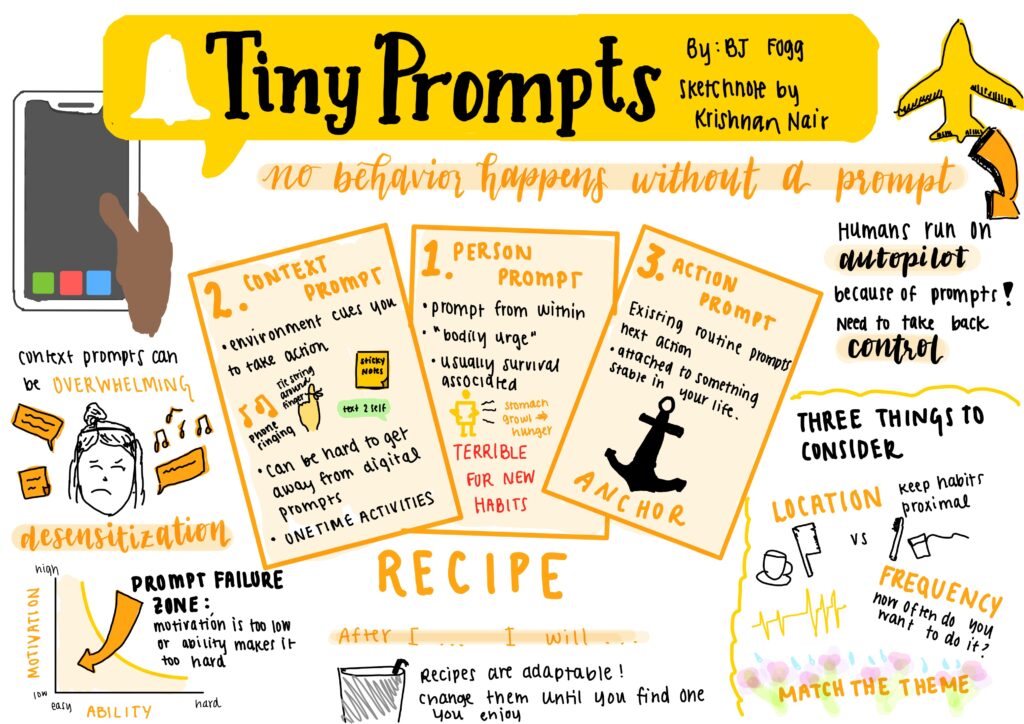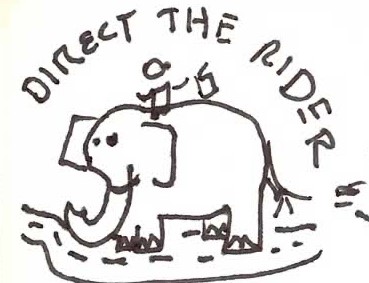Introduction
In today’s era of relentless media consumption, the paradox of being simultaneously inundated with information and disengaged from current events has never been more pronounced. This dichotomy raises a critical question: why, in an age where accessing news is easier than ever, is engagement with current events waning?
The importance of staying informed, particularly in today’s volatile geopolitical climate, cannot be overstated. As we all know, good habits compound over time. Establishing informed habits early in adulthood, especially during college years, is crucial for fostering a lifelong commitment to staying an informed citizen. Despite extensive research on news consumption behaviors, the specific dynamics within a college environment remain underexplored.
Comparative Analysis & Literature Review
In our comparative analysis, we delved into the complexities of news consumption patterns, with a focus on the transformative habits of college students. This demographic serves as a poignant reflection of wider societal shifts towards digital news platforms, notably influenced by the nuanced roles of social media. Drawing from a broad spectrum of studies, we scrutinized the juxtaposition of traditional and digital news mediums, emphasizing the increasing reliance on the latter for news dissemination. Among these comparators, significant insights emerged regarding the evolving nature of news consumption among young adults.
A critical insight from our literature review is the pronounced migration towards digital platforms among younger demographics, a trend underscored by the findings of Head et al., who observed a diverse range of news consumption pathways among students facilitated by digital media (Head et al., 2019). This shift is not without its challenges; cognitive overload and emotional fatigue due to negative news content, alongside the pervasive threat of misinformation, stand as formidable barriers to healthy news engagement.
Our research further underscored the indispensable role of social interactions in shaping news consumption behaviors. The significance of community and dialogue in reinforcing news habits, particularly among college students, is captured by Antunovic, Parsons, and Cooke, who delineate a three-stage process of news consumption influenced by digital media (Antunovic et al., 2018). This resonates with the broader literature, highlighting the nuanced impact that social dynamics have on perceptions of news credibility.
Our comparative analysis spanned across traditional news aggregators like Google News, innovative news newsletters such as Morning Brew, content curation platforms like Flipboard, and platforms offering a comparison of news biases like Ground News. We also explored social media-driven news consumption on Instagram and the role of direct messaging as a news dissemination and discussion tool. Each platform was critiqued for its approach to personalizing content for the user, the cognitive effort required to engage with the content, the facilities for active engagement with other users, and the overall quality of knowledge imparted.
One large trend identified was the increasing emphasis on personalization, as seen in platforms like inkl and Flipboard, which curate news based on user interests and behaviors. However, this personalization often comes at the cost of cognitive overload, where the sheer volume of tailored content can overwhelm users, leading to disengagement or selective exposure to news.
Another significant observation was the varying degrees of active engagement enabled by these platforms. For instance, social media channels like Instagram offer users the ability to share, comment on, and discuss news stories within a familiar social network, thereby enhancing the social dimensions of news consumption. In contrast, traditional news aggregators provide limited opportunities for such interactions, potentially reducing the depth of engagement with the news content.
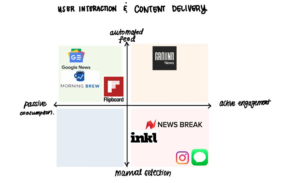
![]()
Employing a 2×2 matrix to map out the news platform landscape based on personalization and user engagement revealed a clear market void: a platform that adeptly combines high personalization with active engagement. Such a platform, service, or activity, as envisioned, would not only tailor content to individual preferences but also foster a communal ethos and encourage users to engage in meaningful discourse.
The exigency for a novel solution is further illuminated by the comparative and academic analysis, suggesting an opportune moment for developing a news engagement platform capable of tackling the dual challenges of information overload and emotional disconnection from news. It is evident that today’s evolving digital landscape requires sufficiently meeting consumer expectations for an engaging and informative news experience.
As we pivot towards the ideation phase, our endeavor is to conceptualize a solution that not only addresses the current market gap but also anticipates the future dynamics of news consumption. In catering to a demographic increasingly disillusioned with traditional media channels, the envisioned solution promises to help rekindle interest in current affairs and foster a more informed and interactive public discourse (Head et al., 2019; Antunovic et al., 2018; Etta et al., 2023).
Target Audience
The objective of our study was to preliminarily explore news reading habits among college-age students and identify areas of improvement to incentivize greater engagement with current events. Our target audience was comprised of college students who expressed an interest in expanding their knowledge of current events and engaging in discussions about the news with peers or family members. To achieve this goal, we aimed to recruit participants who met the following criteria: 1) demonstrated an interest in reading the news, or expressed a desire to increase their news consumption beyond their current levels, and 2) were willing to engage in discussions about the news with their friends or family, or were open to the idea of doing so. By focusing on individuals who met these criteria, we aimed to gain insights into the motivations and barriers related to news consumption and discussion among college-age students, ultimately informing strategies to encourage and facilitate greater engagement with current events within this demographic.
In selecting our target population, we aimed to capture a diverse range of news reading habits by targeting individuals for whom the importance of news varies significantly. We identified college-aged individuals as a suitable demographic due to the high variability in news consumption habits within this group compared to older populations, where news tends to be more universally important, and younger populations, where news is generally less prioritized. Our focus was on individuals who had an inherent interest in reading the news, as those who lacked interest would not contribute meaningfully to our study. Additionally, we sought participants who were open to discussing the news, even if they did not currently engage in such discussions. Our hypothesis was that many people desire to discuss the news but encounter obstacles in doing so. However, we recognized the value in including participants who were not inclined to discuss the news at all, as their perspectives could reveal key insights into barriers to engagement. This approach allowed us to explore a wide range of attitudes and behaviors related to news consumption and discussion, ultimately enriching the depth and breadth of our study findings.
Our Screener was used to ensure that participants in our baseline study fell into our target population with some outliers.
Baseline Study
The goal of the diary study was to examine the behavior of college students when engaging with current events. Participants were required to record their daily consumption of news and journalism, including the topic, publication, mode of consumption (primary and secondary), and their accuracy of information recall on a scale of 1 to 10 as a proxy for engagement. Additionally, participants documented any additional types of engagement, such as discussions with peers or sharing links related to the news.
Each day, participants selected one piece of media from their consumption list and provided a rationale for why they initially decided to engage with it. This provided insights into their motivations for engaging with specific news content. The data collected was both qualitative and quantitative in nature. Qualitative data included the nature and motivation of engagement, while quantitative data encompassed the level of recall, frequency of consumption, topics of interest, number of sources consulted, and mode of consumption.
To facilitate data collection, participants were provided with a Google Sheets spreadsheet to populate with their daily records. They received a daily email reminder with a link to their specific sheet to encourage consistent participation. In cases where participants failed to fulfill their obligation, individual follow-ups were conducted to ensure data completeness and accuracy. This structured approach aimed to provide comprehensive insights into the behaviors and motivations of college students when engaging with current events.
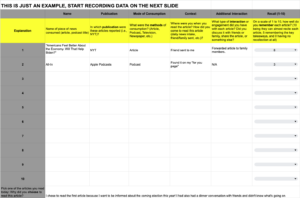
Baseline Study Outline
Goal: Examine the behavior of college students when engaging with current events.
Diary Study Outline:
- Record (DAILY): Each piece of news/journalism consumed:
- Topic
- Publication
- Mode of Consumption (Primary)
- Primary = news directly from news sources as opposed to hearing about it from a friend, in class e.g. WSJ, podcast, newspaper
- Information Recall Accuracy (1-10) at the end of each day
- Additional Types of Engagement (ie. discussion with peers, sharing links, etc.)
- Record (DAILY): One selected piece of media from the above list and the rationale for why the participant originally decided to engage with it. Only one is selected to reduce burden on participants + interesting to see if the the article they chose has consistent patterns in terms of media or content type
Data Types:
- Qualitative:
- Nature of Engagement
- Motivation for Engagement
- Quantitative:
- Level of Recall
- Frequency of Consumption
- Topics of Interest
- Number of Sources
- Mode of Consumption
Data Format:
- We will create a spreadsheet (Google Sheets) for each participant to populate with their data. Each day, we will send an email with a link to their specific sheet to remind them to fill out the sheet according to the instructions of the study. We will expect the participants to fill this out each day. If we find that a participant is not fulfilling their obligation, we will follow up with them individually
Materials:
- Recruitment Emails
- Email for study introduction
- Individual Data Capture Spreadsheet
- Baseline Study Data
Synthesis
After the meticulous collection of data through our interviews, we embarked on the critical task of affinity mapping to distill and understand the wealth of information before us. This process began with a detailed breakdown of each interview, where we dissected conversations to isolate individual thoughts, observations, and experiences shared by our interviewees. The aim was to transcend the surface-level data and delve into the underlying patterns and themes that emerged across different participants.
Affinity mapping played a pivotal role in this analytical phase. By organizing the extracted data into clusters on a broad canvas, we began to see the contours of common experiences and perceptions among our interviewees. This clustering was not just about grouping similar statements; it was an exercise in identifying relationships between ideas, feelings, and behaviors that might not have been immediately apparent. Our goal was to highlight the various trends that were consistently present across interviews, which would, in turn, inform and shape the trajectory of our subsequent work.
This iterative process of mapping and analysis was instrumental in identifying key themes that resonated across our participant pool. As we navigated through the clusters of insights, several dominant patterns began to emerge, shedding light on the shared challenges, motivations, and barriers faced by students in their news consumption journeys. It was within this rich tapestry of clustered insights that the foundations of our grounded theories were laid.
Grounded Theory
The trends and patterns unearthed through affinity mapping directly informed the development of our grounded theories. Each theory was rooted in the empirical data gathered from our participants, yet their formation was guided by the nuanced understanding that emerged from our affinity analysis. For instance, the social dynamics of news consumption, the overwhelming nature of news content, and the private manner in which students engaged with news were all themes that surfaced prominently during the mapping process. These insights became the cornerstones of our grounded theories, each reflecting a different aspect of the student news consumption experience.
The first theory posited that students’ news reading habits are significantly shaped by the social dimensions of their consumption—how it’s perceived by peers and society at large. This insight revealed a tension between the desire to appear informed and the fear of being perceived as insufficiently knowledgeable or even as a pseudo-intellectual. This dichotomy was especially pronounced when considering news source prestige and the apprehension around sharing or discussing news without extensive background research.
The second theory highlighted the aversion many students feel towards news consumption due to its overwhelming nature, often inducing feelings of confusion, sadness, or anxiety. A perceived high barrier to entry, in terms of understanding complex stories, frequently led students to default to more accessible forms of entertainment or social media.
Lastly, our third theory uncovered that for many students, news consumption is a deeply personal and private activity. This preference stems from vulnerabilities around reading pace, comprehension abilities, or interests in certain types of news, leading to habits of private engagement with minimal public sharing or discussion.
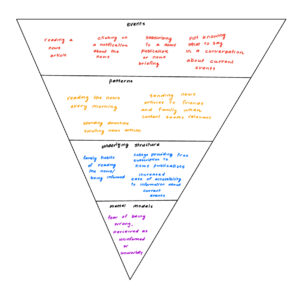
The Iceberg Model served as a powerful analytical tool in our study, enabling us to peel back the layers of observable news consumption behaviors to uncover the deeper underlying structures and mental models. Through this model, we discerned a striking correlation: students with a strong mental model around the fear of being perceived as misinformed or incorrect about current events exhibited a disciplined habit of daily news reading. This observation was pivotal, revealing how deeply ingrained fears and perceptions about social image and intellectual competence drive the consistency and rigor of news engagement. The Iceberg Model helped us understand that these mental models act as both a barrier and a motivator, influencing students’ approach to news consumption in profound ways. This insight into the psychological underpinnings of news habits underscored the importance of addressing these mental models in our intervention strategies to foster a more positive and engaging news consumption experience.

Utilizing the Connection Circle model offered us invaluable insights into the reinforcement cycles that shape news consumption behaviors. This model illuminated the intricate web of positive and negative feedback loops within individuals’ social networks, highlighting how peer pressure and the desire for social superiority influence news reading habits. One particularly revealing cycle identified was the loop between regular morning news reading, the perception of social superiority amongst peers, the social pressure to appear or continue to be informed, and the reinforcement of daily news reading habits. This cycle exemplifies the significant impact of social dynamics on news consumption, suggesting that peer influence can both encourage and constrain news engagement. By mapping out these reinforcement cycles, the Connection Circle model provided a nuanced understanding of how social interactions and perceptions contribute to the formation and perpetuation of news reading habits, offering a clear direction for developing solutions that leverage social influence to enhance news engagement.
Personas
In our investigation into the diverse habits and challenges of news consumers, interviews revealed a complex landscape of preferences and needs, leading us to identify three key personas: the Avid Reader, who seeks depth and breadth in news; the Hobby Reader, who prefers news through the lens of personal interests; and the Avoidant Reader, who selectively engages with content to minimize exposure to distressing information. This segmentation allows us to delve into the nuanced ways individuals interact with news, aiming to enhance the consumption experience by addressing the unique behaviors, motivations, and challenges of each group.
Bisa – The Avid Reader Persona
Bisa embodies the dedicated student and finance intern archetype, who, under the influence of her family’s emphasis on the importance of staying informed, has cultivated a rigorous routine of consuming news every morning. This ritual begins in her bedroom where she begins her day by reading into the latest news briefings that arrive in her inbox. This routine, while reflective of a commitment to being well-informed, paradoxically leads to a sense of isolation. Bisa’s engagement with news is a solitary activity, devoid of interaction with others, which contradicts her underlying desire for social connection.

Despite the pride she takes in maintaining this habit and her self-perception as a worldly individual, she confronts the reality that her informed state does not facilitate social engagement.
Social Norms Theory suggests her news consumption is not just a personal choice but a response to the social expectations set by her family. BJ Fogg’s model further explains her behavior as a confluence of high motivation, ability facilitated by resources, and daily triggers (news briefings). However, the model also highlights a gap in her routine—the absence of triggers for social interaction related to her news consumption.
Addressing Bisa’s isolation requires ideation that introduces elements of social interaction into the news consumption process. Potential solutions could involve developing platforms or features that encourage discussions about news topics, enabling users to share insights and engage in debates. These social features could transform her solitary routine into a communal activity, bridging her need for information with her desire for social connection.
Neel – The Hobby Reader Persona

Neel, transitioning from his past as an athlete to an international EE Masters student, navigates his news consumption with a distinct set of preferences and pressures. His engagement with news is two-fold: driven by an inherent interest in hobbies and the appreciation for specific journalistic styles, and yet, formed by a sense of obligation to stay on top of significant global events. This dichotomy manifests in his morning routine, where he consumes news from various subscriptions while lying in bed or eating breakfast. While Neel enjoys articles that align with his interests, he also reads about global issues, motivated by a fear of social insecurity stemming from a lack of awareness.
Lewin’s Equation hypothesizes that this behavior is a function of the individual and their environment, and PAC Motivators highlights the role of pleasure, avoidance of pain, and compliance in driving actions. Neel’s scenario underscores a struggle to balance personal satisfaction derived from reading about hobbies with the societal expectation to be informed about significant events.
Ideation for Neel could focus on crafting a personalized news aggregation experience that balances his preferences with the sense of duty to be informed. By integrating algorithms that curate a mix of hobby-related content and summaries of significant news, the solution would cater to Neel’s dual needs and mitigating his sense of obligation.
Ari – The Avoidant Reader Persona
 Ari presents a unique persona—an art student with an affinity for the outdoors, who consciously avoids news consumption that might adversely affect her emotional state. Her mantra, “Ignorance is bliss,” epitomizes her approach to news, aiming to stay minimally informed to ward off feelings of complete ignorance while protecting her emotional well-being. This approach manifests in selective engagement with news, primarily on topics that directly impact her life or pique her interest, and is often pursued in solitude. Despite occasional efforts to engage more actively with news through physical newspapers, Ari is caught in a tug-of-war between her desire to bemore informed and the emotional toll such engagement exacts.
Ari presents a unique persona—an art student with an affinity for the outdoors, who consciously avoids news consumption that might adversely affect her emotional state. Her mantra, “Ignorance is bliss,” epitomizes her approach to news, aiming to stay minimally informed to ward off feelings of complete ignorance while protecting her emotional well-being. This approach manifests in selective engagement with news, primarily on topics that directly impact her life or pique her interest, and is often pursued in solitude. Despite occasional efforts to engage more actively with news through physical newspapers, Ari is caught in a tug-of-war between her desire to bemore informed and the emotional toll such engagement exacts.
Ari’s behavior aligns with the principles of PAC Motivators, especially the avoidance of pain, and Switch theory, which highlights her internal conflict between recognizing the importance of being informed and her preference for emotional comfort. This dichotomy points to a core need for news consumption that is emotionally neutral yet informative.
Ideation for Ari revolves around creating news content and platforms that minimize emotional distress while providing succinct, unbiased summaries of essential news. This could involve developing news outlets that focus on positive news or leveraging technology to filter news based on emotional tone, thereby offering Ari and similar users a way to stay informed without compromising their emotional well-being.
For our intervention study, we decided to prioritize our Hobby Reader persona. Unlike Avid Readers, who already possess a well-established routine, Hobby Readers demonstrate a keen interest in topics that resonate personally but lack a consistent habit of engaging with news broadly. This gap between interest and habit underscores a significant opportunity: Hobby Readers are on the cusp of deeper news engagement, requiring just the right nudge to transform interest into a regular practice.
Our decision to center on Hobby Readers is also motivated by the recognition that while they have a strong inclination towards learning and exploring within their comfort zones, they often miss out on the broader spectrum of news due to a lack of habit or motivation. This demographic represents a unique challenge and opportunity—how do we cultivate a news consumption habit that not only feeds their existing interests but gently encourages them to widen their informational intake?
Incorporating social engagement into the news reading experience for Hobby Readers can serve as the catalyst needed to transform sporadic interest into a consistent habit. Social elements, such as discussions, sharing capabilities, and community engagement around news topics, can significantly enhance the attractiveness of news consumption. By leveraging the natural human inclination towards social interaction, we can provide an additional layer of motivation for Hobby Readers to engage with news more regularly. This not only aids in habit formation but also enriches the reading experience, making it more dynamic and interactive. Moreover, focusing on Hobby Readers in the morning—when many are setting the tone for their day—offers a strategic touchpoint for embedding news consumption into their daily routines.
We initially developed journey maps for all three of our personas.
The Avid Reader:

Imagine someone whose day cannot start without the ritual of absorbing the day’s news, almost as essential as their morning coffee. They’re the type who sits, perhaps with a tablet or smartphone in hand, brows furrowed in concentration, soaking in every word. This person finds a deep sense of satisfaction in being the most informed person in the room, not just to boast, but because they genuinely believe that this knowledge enhances their academic performance and enriches discussions. To them, the morning news is not just information; it’s a stepping stone to excellence, a way to feel a step ahead in the world’s fast-paced rhythm.
The Hobby Reader:

Picture someone with a more laid-back approach, who cherishes the tactile feel of newspaper pages between their fingers over breakfast. This reader isn’t rushing; they’re savoring—each article, each moment. They hold a certain pride in their traditional media choice, feeling it connects them more deeply to the world outside, grounding them in a sense of place and community. In class, they’re the fully present student, valuing the here and now over the constant digital updates. Their news consumption is a deliberate choice, blending information with the comfort of routine and the warmth of nostalgia.
The Avoidant Reader:

Envision a person for whom mornings are a struggle, where the allure of sleep outweighs the call of current events. They approach their day with a sense of pragmatism, focusing on what feels immediately relevant and engaging—namely, their studies and personal interests. News, with its often overwhelming barrage of information, feels more like a chore than a benefit. This persona finds solace in the simplicity of their routine, unbothered by the need to keep up with every headline. Their world is more about the tangible, immediate experiences of life, finding joy and contentment in the knowledge and activities that directly touch their lives.
We then created a more in-depth journey map for our Hobby Readers, focusing on the key phases of their morning news consumption and capturing both the actions and emotions involved in the process:
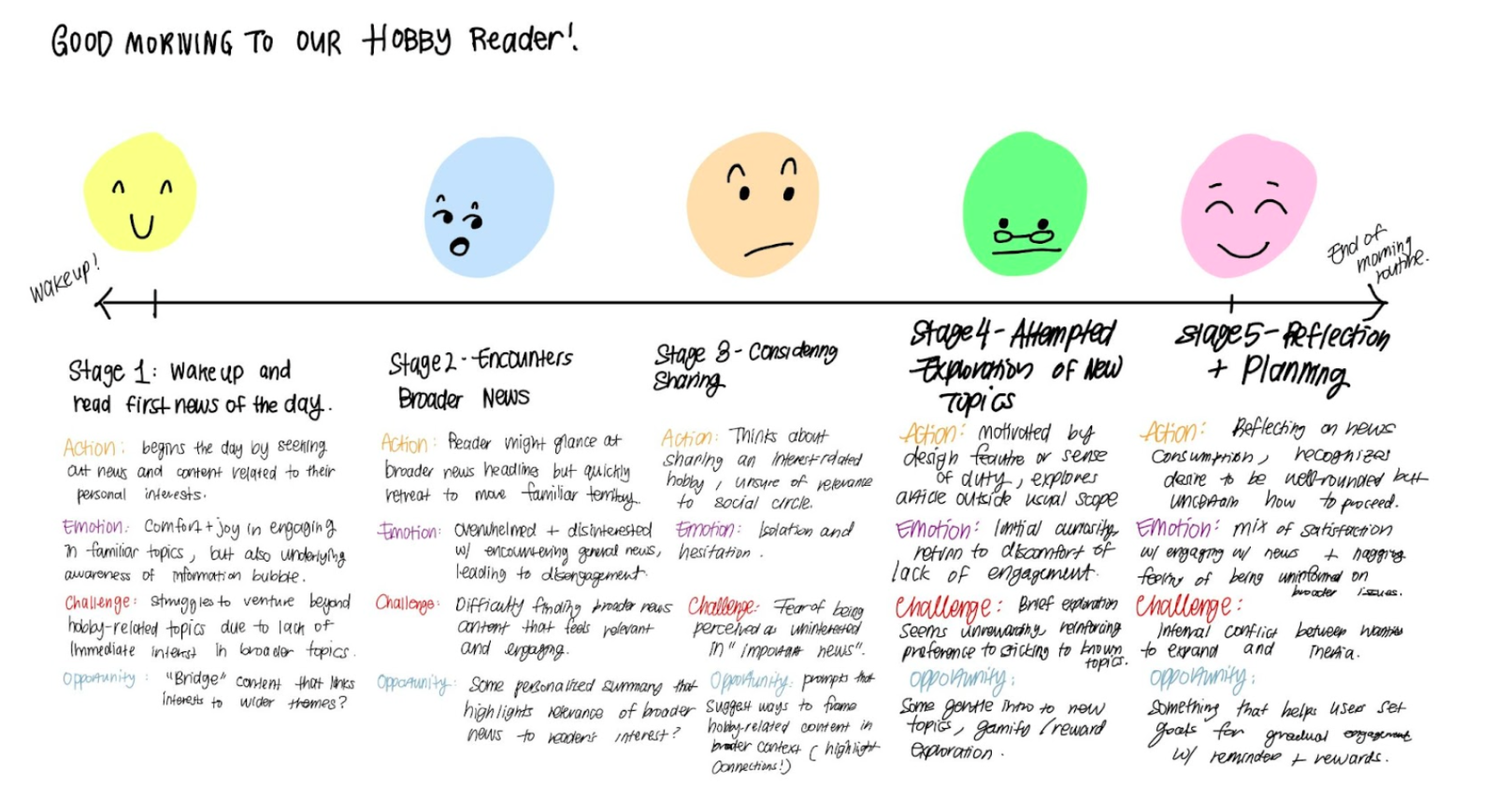
Intervention
Our intervention exploration and ideation began by acknowledging a paradox in news consumption behaviors identified through our persona studies: while individuals often consume news in solitude, it’s the underlying social pressures that predominantly motivate their engagement. This duality illuminated a challenge: How can we design a solution that respects the private nature of news reading while harnessing the motivational power of social influence?
Our grounded theory, derived from interviews and behavioral observations, revealed two critical insights: a pervasive fear among individuals of being perceived as uninformed and the overwhelming nature of managing voluminous news content. These findings underscored the necessity for solutions that not only simplify news consumption but also embed social motivation within the process. These insights led us to frame our design challenge around creating solutions that are low-friction, socially engaging, and simplify the news consumption process without adding to the overwhelm. Our ideas were as follows:
Three Solution Ideas:
Friend Activity Tracker: Inspired by our grounded theory indicating the profound impact of peer influence on news consumption patterns, the Friend Activity Tracker was conceptualized as a digital space where users can see the articles their friends are reading in real time. This solution taps into the motivational aspect of social influence, encouraging users to broaden their reading habits and engage with a wider array of topics. The benefits of such a system include fostering a sense of community around news consumption, enhancing the discovery of diverse content, and leveraging peer influence to motivate regular engagement with news. However, concerns about privacy and the potential for creating echo chambers—where users are only exposed to perspectives similar to their own—pose significant challenges. Additionally, there’s a risk that the volume of content shared could become overwhelming, potentially leading to disengagement.

News Wrapped: Drawing parallels between news consumption and leisure media engagement, like that seen with Spotify Wrapped, News Wrapped aims to make news engagement a reflective and social experience. This solution was designed to address the overwhelming nature of news consumption by encouraging users to reflect on their news habits, recognize patterns in their consumption, and share insights with friends. The interactive summary of a user’s news consumption over a period offers a novel way to engage with news, potentially leading to more balanced and diverse reading habits. While this idea promotes shareability and awareness of one’s news consumption patterns, it risks encouraging superficial engagement with news content. There’s also the potential for users to feel pressured to consume news in a certain way to create an impressive wrap-up, alongside concerns about data privacy related to tracking and sharing one’s news consumption habits.
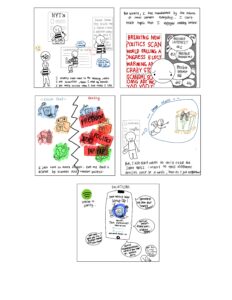
BeReal Media: BeReal Media emerges from the recognition of the steep learning curve and fear of appearing uninformed that many individuals face in news discussions. By providing a platform where friend groups are sent a daily article to read together, BeReal Media seeks to create a level playing field, fostering inclusive discussions and shared learning experiences. This solution is particularly appealing for its ability to establish common ground, making news discussions more accessible and less intimidating. It also encourages daily engagement with news, introducing users to a mix of popular and group-preferred articles. Despite its advantages, BeReal Media could limit exposure to a broad array of perspectives if the selection of daily articles is not diverse enough. The emphasis on group reading might also inadvertently promote groupthink, unless discussions are structured to encourage critical thinking and exploration of differing viewpoints. Furthermore, the expectation of daily engagement could, over time, feel burdensome to some users, diminishing the enjoyment of the news consumption process.

After careful consideration, BeReal Media was selected as our flagship concept for its strong alignment with our grounded theory and its potential to address key challenges identified in news consumption behaviors. By facilitating shared reading experiences, BeReal Media aims to mitigate feelings of overwhelm and isolation, making news engagement a more enjoyable and social activity. This approach promises not only to enhance the depth of news engagement among users but also to foster a more informed and connected community of news consumers.
Intervention Study
In the quest to enhance news engagement among young adults, our team embarked on a journey to identify an intervention that could seamlessly integrate into daily life while capitalizing on the potent influence of social interactions. The “Articles for Friends” intervention emerged as a standout choice, grounded in our foundational hypothesis: that social influence is a critical lever in shaping news consumption behaviors. This intervention is specifically designed to probe the depths of this hypothesis by fostering a direct and meaningful exchange of news content within personal networks. The decision to pursue this direction was bolstered by our grounded theory research, which highlighted the dual challenges of information overload and social isolation in news consumption. “Articles for Friends” aims to address these challenges by encouraging shared reading experiences, thus making news engagement a more manageable and socially enriching activity.
Our intervention study is structured around a simple yet effective mechanism: participants are tasked with sharing one news article with a friend each day over the course of the study. The choice of articles is left to the discretion of the participants, allowing for a natural selection process that reflects genuine interests and current events. This design not only mirrors real-world news sharing behaviors but also introduces a layer of intentionality and mindfulness into the act of news consumption.
To ensure a comprehensive understanding of the intervention’s impact, we plan to adopt a mixed-methods approach for data collection:
- Quantitative Data: We will track the number of articles shared, the topics covered, and the frequency of discussions sparked by these shared articles. This data will help quantify the level of engagement and the diversity of news content being exchanged.
- Qualitative Feedback: Through daily journals and end-of-study interviews, participants will provide insights into their experiences with the intervention. This feedback will include reflections on the ease of integrating the intervention into their daily routines, the quality of discussions with friends, and any changes in their perceptions or habits related to news consumption.
The “Articles for Friends” intervention is poised to shed light on several critical dimensions of social news engagement, encapsulating the multifaceted nature of how people interact with and around news content. At the heart of this intervention is the anticipation of enhanced engagement with news articles. This is expected as participants share and deliberate on news pieces with friends, driving a deeper and more meaningful interaction with the content. Such interactions are not only about exchanging information but also about contributing to conversations in a way that enriches the participants’ social fabric.
Moreover, this intervention is likely to catalyze a diversification in the sources and topics of news that participants engage with. As they seek out articles to share, participants are naturally inclined to venture beyond their habitual news consumption patterns, exploring a wider array of content. This exploratory behavior is pivotal, as it broadens participants’ perspectives and exposes them to a richer tapestry of news narratives, thereby challenging and expanding their worldviews.
Furthermore, the act of sharing news articles is expected to play a significant role in strengthening social bonds among participants. Through the intellectual and emotional exchanges that ensue from discussing current events, participants are likely to experience a heightened sense of community and shared understanding. These discussions can transcend mere information exchange, fostering a deeper connection and empathy among friends as they navigate the complexities of the world together.
Lastly, the intervention promises to yield valuable behavioral insights, offering a window into the dynamics of news sharing and discussion within personal networks. Understanding the barriers and facilitators to such interactions is crucial for designing future news engagement platforms. These insights are expected to inform the development of solutions that more effectively harness the power of social influence, making news consumption a more engaging, inclusive, and community-oriented experience.
“Articles for Friends” is not just an intervention study; it’s an exploration into the power of social influence in transforming news consumption from a solitary activity into a shared, engaging experience. By closely examining the interactions, behaviors, and reflections of participants, we aim to uncover actionable insights that can guide the development of news engagement solutions that resonate with the needs and preferences of young adults in today’s digital age.


